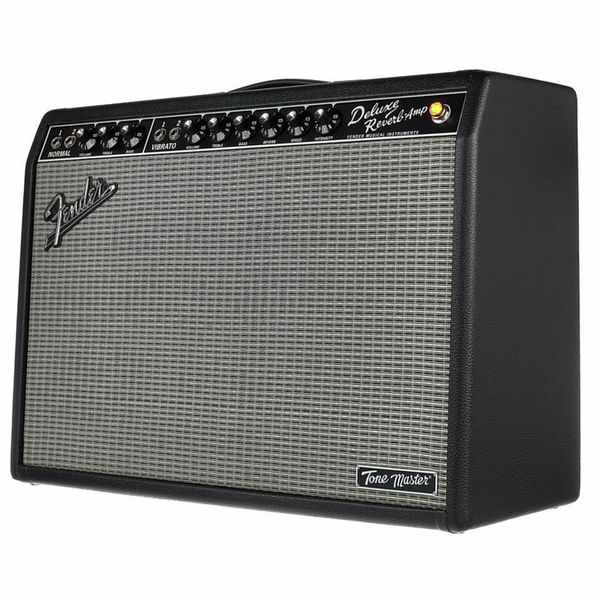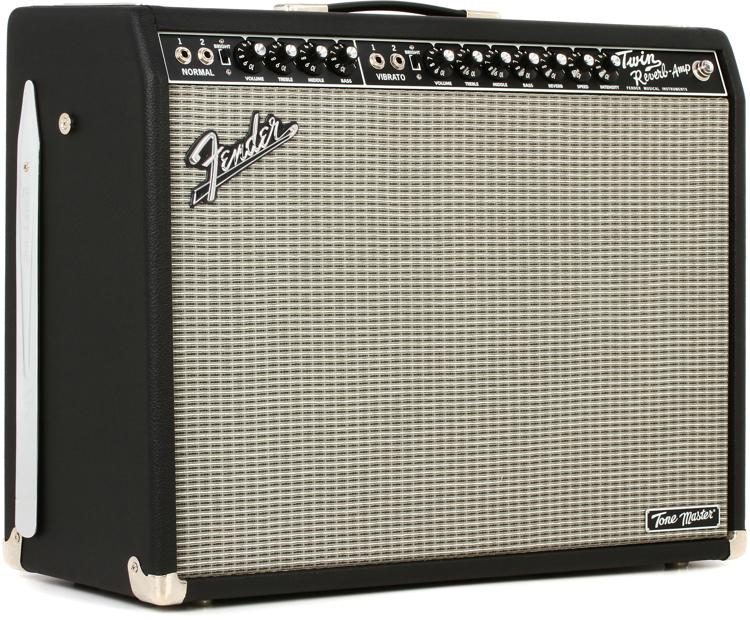
Image from gearrank.com
I’ve got amps. Ten of them, in fact. Truth be told, I only play three with any regularity – though I’d play the fourth had I not burned out the transformer – but I still want another amp; specifically, I’m eyeing the new Fender Hot Rod V4 with its updated overdrive and tighter reverb. Frankly, I never really had too much of a problem with the original reverb, but when Fender mentioned that they made it a bit tighter, it made sense to me because I rarely set it past 2 or 3 because my sound would get “mushy.”
In any case, on thinking about evaluating the new Hot Rod, I asked myself the very question that I used to entitle this article: What do I really need from an amp, and what do look for with an amp that deems it “buyable?”
For me, the tone of an amp is not really an issue. After 48 years of playing guitar (shit – am I really that old?), my tone is my tone. With different amps, effects, guitars, etc., sure, I’m going to get different textures, but how I ultimately sound will sound like me. So I’m no longer chasing after gear that will help define my sound.
Given that, especially with amps, there are specific things I look for when evaluating one for purchase – or for plain review, for that matter. I’d thought I’d share these factors because they might be useful for anyone who is evaluating an amp. Granted, these are subjective evaluation points – I freely admit that – but as I’ve evaluated literally hundreds of amps over the years, I’ve found them to be useful and these features inform my decision to either buy or give an amp high ratings.
And note: I realize we all view the world through the lens of our own experience, so what I find valuable may not be at all what you look for, but I’ll share my thoughts just the same.
These aren’t in any particular order, but here goes:
Cleans
Of particular interest to me is an amp’s clean tone. I was actually going to talk about clean headroom, but I realized that I have different amps set up for varying degrees of headroom. For my classic rock and church gigs, I use amps that are biased hot to break up relatively early. For my classic rock band, I always play a little dirty and for playing in church, I need the early breakup so I can get amp distortion at a lower volume since I have to play a lot lower in volume in that venue.
But one thing all my amps (at least the ones I gig with) have in common is this: The clean tone is thick; that is, the full EQ range, from low to high, is represented in the sound.
EQ Adjustability
Though I prefer a much thicker, richer clean tone, sometimes I want to roll off or boost the highs or cut out some of the lows. So an amp’s EQ responsiveness is important to me. With some amps, the EQ adjustments are so subtle as to be useless. But other than using EQ as an effect, it is important to me that I’m able to adjust an amp’s EQ so that the guitar I use it with sings properly. For instance, if use a Strat in front of one my Aracom amps, which are Plexi-style amps, they’re voiced high. So I always roll off the highs a bit with a Strat. On the other hand, with a Les Paul, I crank up the highs to compensate for the deep voicing of my Les Paul.
Dynamic Response
This is probably the most subjective area and probably means different things to different people. But to me, the dynamic response has to do with how the amp responds with varying levels of input gain; either from my guitar’s volume knob or with an overdrive or booster pedal and attack on the strings. When I set up an amp for performance, I always set it on the clean side of the edge of breakup, with my guitar’s volume knob(s) set at dead-center. This way, if I roll on the gain, the amp will break up. If I crank my gain, I should get some nice, smooth overdrive from my pre-amps. If I roll it all back or pick lighter, I expect the amp to settle down. But bear in mind, this is all relative. For me, I don’t like to play with oodles of distortion, but what I do want to be able to do is control my amp from my guitar. Of course, there are circumstances where I may have to make adjustments at the amp, but those should be few and far between.
Sustain/Decay
Again, this is a subjective thing, but another thing I look for is how long an amp will “hold” a note before it tapers off. Some amps just die a quick death with this particular test. Pluck a note with no vibrato and see how long the note lasts. What I look for in this particular test is the nature of the tapering off. If it’s relatively long and smooth, that will appeal to me. But if I pluck a note and it stays at a certain level then suddenly drops off, that’s problematic for me. I’m not a fast player, so what I tend to do is try to squeeze as much sound out the notes I play. It helps if the sound doesn’t trail off quickly.
NOTE with this test – and to be fair – I crank the volume on the guitar to make sure as much signal gets to the amp as possible. It’s also best to do this test at a moderate volume as high volumes tend to blow your ears out. 🙂 At a lower volume, you’ll see just how fast the decay is.
Cabinet Construction
To me, the construction of a cabinet – its build quality as well as the materials – plays an important role in how it sounds. Granted, this is a minor factor relative to the other things I look at, but given the choice of two equally good-sounding amps, I will go with the amp that I feel has the better cabinet. Also, this really doesn’t apply to independent heads – I couldn’t care less what they’re housed in. First, I will look at the thickness of the walls. I prefer cabinet walls that are no more than 3/4″ thick; better if they’re 1/2″. Why? Thinner walls resonate better, which is also why I prefer solid pine or birch cabinets because you can get that thin with the wood without making too big a sacrifice with structural integrity. But irrespective of thickness, I still prefer solid wood over MDF. But let me say that while this is a consideration, I typically use it as “icing on the cake” rather than it being an absolute determining factor. If an amp sounds killer and hits all the marks on the other factors, I’ll get the amp or give it a high rating.
What About Tubes?
I don’t care. A great-sound and responsive amp is a great-sounding and responsive amp. Period. I know, tube amps have been all the rage for years. I went to tube amps exclusively for quite a long time. I can’t deny it: Twiddling with tubes and bias settings and all that hand-wired, point-to-point shit is cool. BUT I’ve always loved amps like the Roland JC-120, a foundation in both the blues and rock world (don’t forget that Satch recorded “Surfin’ with the Alien” with a JC-120). But now, there are some FANTASTIC amps made of solid-state components that simple rock the house. The Roland JC-40, Quilter amps, and hybrids like the DV Mark amps. These all sound incredible! I have a DV Mark Little 40. This is my go-to gigging amp with my classic rock band because of its versatility. I can shape the sound with this to make it sound like a Marshall or a Fender. It’s not the SAME sound, but close enough.
Usability Features
These are more “icing on the cake” things, but they can be important; especially if I’m evaluating an amp for a specific usage. But in general, I look for obvious usability items. These include easy-to-read labels. easily accessible auxiliary inputs/switches, usable knobs. For instance, when I’m playing acoustic guitar, I invariably use my SWR California Blonde. Great amp. I usually run the direct out from the amp into a board for sound reinforcement so I can keep my stage volume down. But the jack is positioned in such a way that I have to use a key or a knife to unlock the XLR when I’m done. All they had to do with turn the jack upside down and this wouldn’t be a problem. Something like this is not a deal-breaker, but a collection of these things can be so annoying as to make me feel as if the amp is unusable to the point that I wouldn’t buy it.
I know that these factors aren’t necessarily standard, but they’ve served me well over the years. I think the reason I went this route is that it’s easy to fall into the marketing crap and look at charts and graphs. They can certainly inform you of an amp’s capabilities, but in the end, you have to use an amp, and for me, the things I look at just can’t be measured by numbers. They have to be felt or heard.
Read Full Post »






 Or… this could be called Confessions of a Tube Amp Snob…
Or… this could be called Confessions of a Tube Amp Snob…
 First, a little history…
First, a little history…